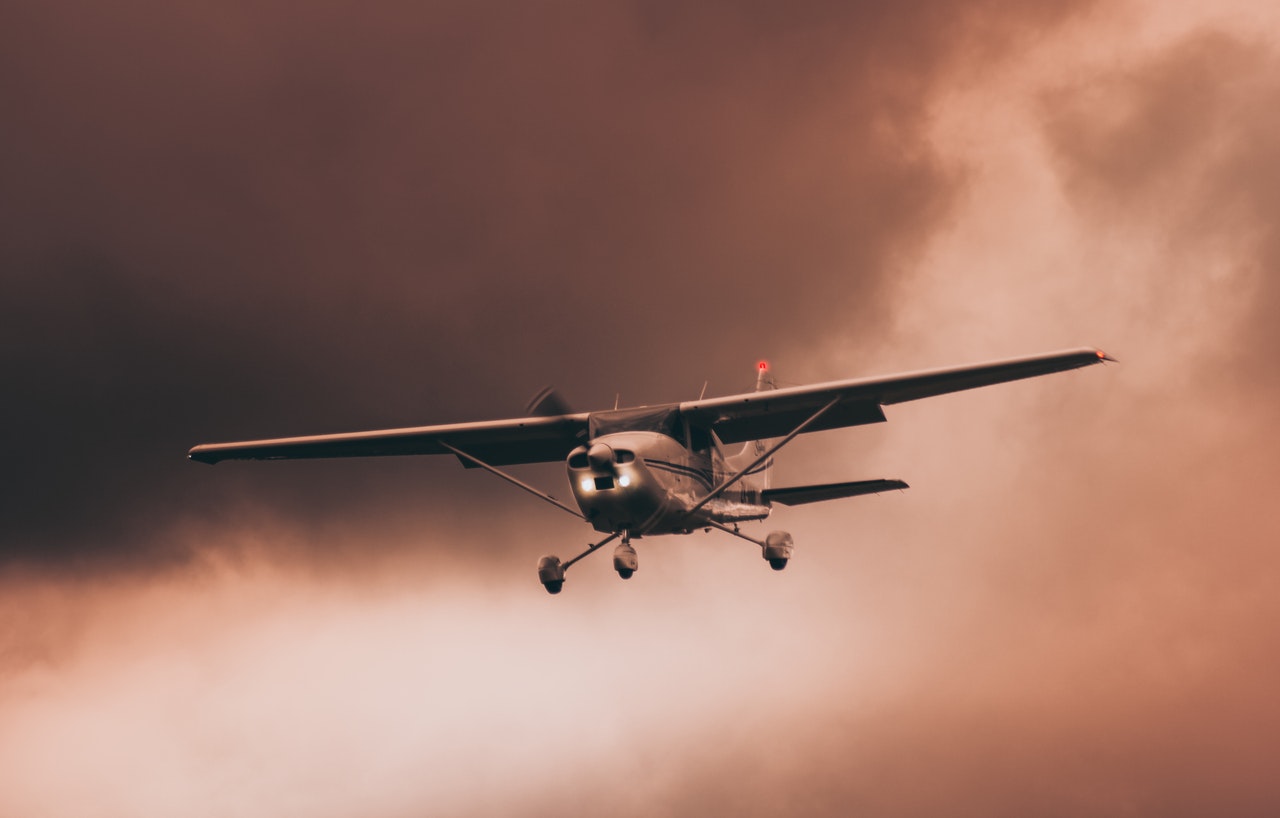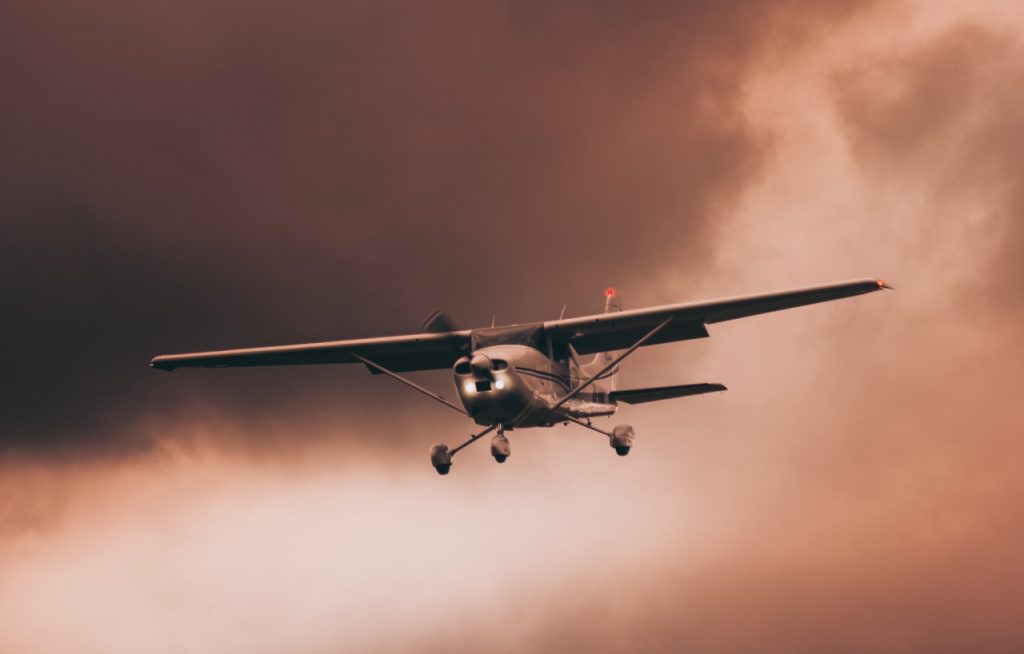
Can a Cessna 172 Flat Spin? A Pilot Explains
Every aviation enthusiast has heard of the dreaded “flat spin”, which probably gained the most notoriety from the 1986 blockbuster, Top Gun. In that movie, it’s a twin-engined F-14 Tomcat that goes into a flat spin as a result of an engine flameout. But what about the Cessna 172? Can the world’s most-produced aircraft also end up in a flat spin?

The Cessna 172 is not easily prone to flat spins, but it may still enter a flat spin if it is loaded beyond the permissible weight specified by the manufacturer. Excess weight towards the rear (aft) of the 172 may also result in a flat spin even when the plane is below the maximum gross weight.
It is extremely rare for a Cessna 172 to end up in a flat spin, but it is a lot more common for it to experience a spiral dive. Flat spins and spiral dives are completely unrelated conditions of flight, but people often confuse one for the other. It is easier to recover from a spiral dive than a flat spin, but poor situational awareness and bad airmanship can make it just as dangerous.
In this post, we’ll take a look at what causes flat spins in a Cessna 172, how to intentionally initiate and recover from a spin, as well as how to prevent and recover from flat spins in 172s.
What causes flat spins on a Cessna 172?
To understand what causes flat spins, we need a bit of background on flight dynamics. For an aircraft to fly, its wings must generate enough lift to overcome its weight. To fly straight and level (without changing heading or altitude), the forces of lift and weight must be balanced.
If you imagine the forces of lift and weight as strings tugging at the plane, then, on a properly loaded 172, the effective point through which the weight acts on the aircraft (called the “center of gravity” (CG)) should be located ahead (fore) of the effective point at which lift acts (called the “center of pressure” (CL)). This is illustrated in the image below.

If the aircraft no longer generates enough lift to counter its weight in flight, this condition is called a “stall”. Stalls occur when the angle of the air flowing over the wing (called the “angle of attack”) becomes too high relative to the wing, causing the smooth airflow to become turbulent.
When a 172 is loaded correctly, the aircraft pitches nose down during a stall because the center of gravity is to the fore of the center of pressure. As you can see in the image below, without enough lift, the weight of the 172 effectively acts like a string pulling down at CG, which is ahead of CL.

This nose-down pitching tendency is inherently stable, as it helps restore smooth airflow over the wing, thereby aiding the aircraft in recovering from the stall. In fact, during normal flight, the 172’s horizontal stabilizer generates lift in the opposite direction to the main wings to counter the plane’s natural nose-down tendency.
A spin is a type of stall in which one wing is stalled while the other is not, or where one wing is in a deeper stall than the other. The imbalance of lift across the wings causes the aircraft to roll and yaw towards the stalled wing, usually with the nose of the aircraft pitched down.
A flat spin is a type of spin in which the aircraft’s nose does not pitch down, unlike in a regular spin. This makes it difficult or impossible to recover from flat spins, as restoring smooth airflow over the wing may not be possible without pitching the nose down.
A 172 may enter a spin if turning forces (such as those exerted by the ailerons or rudder) are acting on the aircraft during a stall.
A 172 may enter a flat spin if:
- the plane’s center of gravity is too far aft during a spin, as a result of exceeding the payload limits or loading excessive weight towards the rear of the aircraft
- the aircraft’s elevator (the control surface used to pitch the aircraft’s nose up or down) prevents the nose from pitching down, as a result of control inputs from the pilot, or being jammed or damaged in a nose-up orientation

How to Spin a Cessna 172 (Intentionally)
Safety Considerations
Unlike many other utility aircraft, the 172 is approved for intentional spins, but only with the baggage area empty and no luggage or occupants in the rear seat. It’s also vital to take all the relevant safety precautions before attempting a spin. Before initiating a spin on the 172, the pilot must ensure that:
- they are rated on the type and have been trained on spin recovery procedures by a qualified flight instructor.
- the maneuver is expressly permitted by the specific plane’s file / Pilot’s Operating Handbook (POH), and there are no limitations specified by any placards in the aircraft.
- the aircraft has recently been physically weighed and its weight and balance data sheet is current.
- the operating weight and balance moment lies at the middle of the center of gravity moment envelope for the entire duration of the flight, well clear of the outer edges of the envelope.
- all non-essential loose items that may affect the weight and balance of the aircraft are removed from the cabin.
- the flight area above and below the plane is clear and will remain clear for the entire duration of the maneuver and recovery, with other aircraft in the area notified of the intention to initiate a spin.
- the spin is initiated at an altitude that is high enough to allow for recovery to be completed at least 1,500 feet above ground level (AGL) or more.
Note: In many places, the altitude requirement mentioned above can be a limiting factor that precludes intentional spins. The 172 loses about 1,000 feet of altitude in the first rotation of a spin, and about 500 feet per subsequent rotation; this means that a recovery completed on the third turn of the spin would have resulted in a loss of about 2,000 to 2,500 feet of altitude, at minimum.
Adding the safety deck of 1,500 feet AGL puts the minimum altitude for initiating a spin at 4,000 feet AGL, at the very least.
In regions with a high average elevation, such as Colorado’s average of close to 7,000 feet above sea level, the minimum altitude to safely initiate a spin becomes 11,000 feet above sea level (ASL), taking the aircraft close to its rated service ceiling. Although the published service ceiling of a typical Cessna 172 variant is about 14,000 feet ASL, in practice, many older 172s may struggle to climb beyond 10,000 feet ASL.
Steps to Spin a Cessna 172 Intentionally
After completing all the safety checks, the pilot can spin a Cessna 172 as follows:
- Reduce power by gradually retarding the throttle to idle, while simultaneously pulling back on the yoke to pitch the aircraft’s nose up, setting up the stall entry attitude. It is important to maintain the ailerons in a neutral position.
- As the aircraft begins buffeting while approaching the stall, apply full rudder in the direction that the aircraft should spin.
- Maintain the yoke fully backed up to keep the elevator at its maximum nose-up position and continue to keep the ailerons neutral.
The 172 would have entered a spin on step 2, and the pilot should initiate the recovery procedure as soon as possible.
How to Recover a Cessna 172 From a Spin
The procedure to recover from a spin in a Cessna 172 is as follows:
- Ensure that the throttle is at idle.
- Maintain the ailerons in a completely neutral position.
- Apply full rudder in the direction opposite to the spin rotation and maintain full rudder until the rotation stops.
- At the same time as the rudder application in step 3, push forward firmly on the yoke to move the elevator down.
- Remove rudder pedal input and neutralize the rudder as soon as the rotation stops.
- Progressively apply back pressure on the yoke to pull the aircraft back up to level flight. Simultaneously advance the throttle, adding power as required to maintain a safe airspeed.
Note: Be careful to avoid sharp and abrupt nose-up elevator inputs during recovery as this may lead to another stall, or exert excessive G-forces on the aircraft.
How to Recover a Cessna 172 From a Flat Spin
The steps to recover from a flat spin are the same as in a normal spin recovery:
- Ensure that the throttle is at idle position.
- Maintain the ailerons in a completely neutral position.
- Apply full rudder in the direction opposite to the spin rotation and maintain full rudder until the rotation stops.
- At the same time as the rudder application in step 3, push forward firmly on the yoke to move the elevator down.
- Remove rudder pedal input and neutralize the rudder as soon as the rotation stops.
- Progressively apply back pressure on the yoke to pull the aircraft back up to level flight. Simultaneously advance the throttle, adding power as required to maintain a safe airspeed.
However, the nose-up attitude of a flat spin often renders the rudder and elevator ineffective because of inadequate airflow over those control surfaces. If the inputs on the rudder and elevator fail to counter the spin, increasing power is the last resort to try to increase rudder and elevator effectiveness through the added airflow from the propeller.
